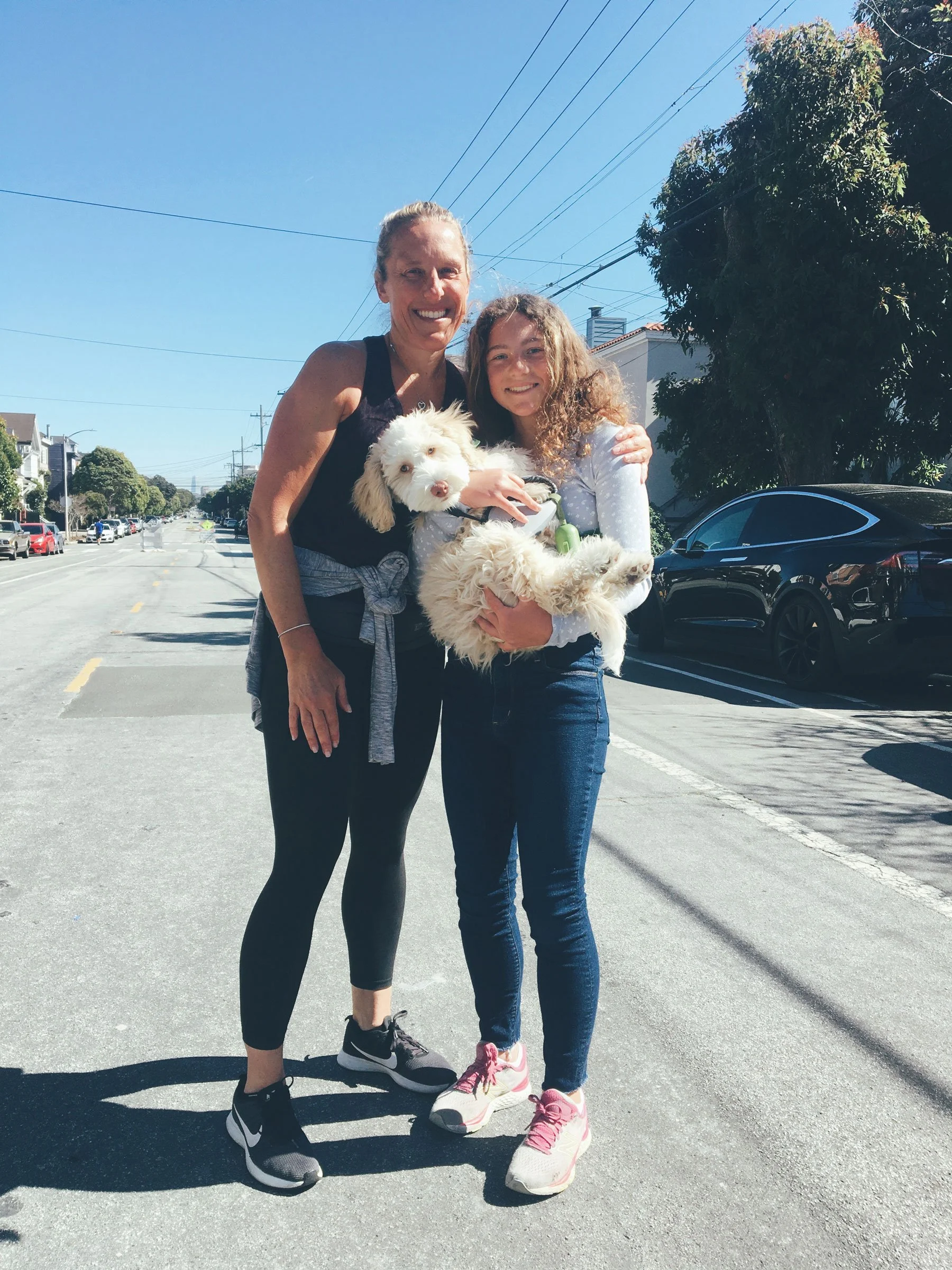Slow Lake Street is a beloved resource for families, commuters, and neighbors across San Francisco and supports the city’s transportation, safety, and climate goals.
In spring 2020, as the pandemic set in, San Francisco began an experiment: to see whether a handful of city streets could become more than mere passageways for vehicular traffic. On these handpicked “Slow Streets,” the city asked drivers using the street as a thoroughfare to take another route. The idea was to make space for walkers, joggers, and bikers without the ever-present fear of collision. Two years on, we can declare the experiment a triumph of intelligent urban innovation.
Slow Lake Street, the leafy boulevard in the northwest corner of our city, is one of those success stories—and the most transformational improvement to the Richmond District in decades. No wonder it is so popular. “We Heart Slow Lake Street” signs adorn hundreds of windows. On a typical day nearly 2,000 locals and visitors alike—on foot, paws, bikes, and other non-car modes of transport—fill Lake Street to commute, gather, and stroll. It makes the entire city better. Let us count the ways.
With Slow Lake, thousands of residents now feel that the street is safe enough to switch from driving to bike-riding. That’s great for bikers, of course, but also for those of us who continue to drive, because this “mode-switching” (as it is called) takes cars off the road. Hundreds of adults now bike Slow Lake as part of their commuting route instead of driving. And hundreds of kids pedal to school, independently, instead of being shuttled by parents—happily avoiding the twice-daily car trips for drop off and pick up.
What’s more, Slow Lake is part of a 47-mile network of two dozen or so other Slow Streets. These create the infrastructure for bikers to traverse the city on calmer lanes with fewer dangerous cars. Bikers often must go out of their way to do so, but the safety is worth it.
Slow Lake confers benefits beyond fostering sustainable transportation. As these vignettes show, Slow Lake has become a charming, pedestrian-centered corridor for San Franciscans to improve their mental and physical health. Quiet prevails over honking, revving, rumbling vehicles. Lake Street, smooth and flat, lets mobility-impaired elderly, stroller-pushers, and joggers alike avoid often uneven, obstacle-ridden sidewalks. The large-scale commuter switch to biking prevents tons of gasoline exhaust from fouling our air. It helps us reach the city goal of making 80% of trips sustainable (i.e., public transit, biking, walking) by 2030.
An SFMTA survey released in March 2022 proved what all of us already knew: Slow Lake is immensely popular in the community. 5,703 respondents took a poll and the result was that 83.5% of Lake Street residents support Slow Lake; 53.4% of Richmond District residents support Slow Lake; and 63.9% of respondents outside the city support Slow Lake.
The SFMTA also did a study of Slow Lake’s effect on California Street traffic—in part demanded by opponents of Slow Lake—and found no effect whatsoever on California traffic as a result of Slow Lake. The report found a mere 14-second increase in peak morning traffic from 2019—which was attributed entirely to the July 2020 “road diet” that cut four California through-lanes to two. Meanwhile, afternoon peak travel times on California decreased by 35 seconds.
If you haven’t yet visited, come see for yourself how it feels to be on a tree-lined promenade alive with teenagers biking together like schools of fish, helmeted commuters chatting on a refreshing ride to work, scootering preschoolers, power-walking retirees—instead of a whizzing succession of two-ton machines. It is at once vibrant and peaceful. You’ll feel your blood pressure drop. You might even forget, for a moment, that you’re in a metropolis.
Slow Lake, born of the pandemic, is a momentous and overdue innovation. It creates a more humane, lively city. It promotes fresh air, exercise, community. It beckons families to stay. Above all it provides, at long last, a genuinely safe way for adults and kids to make their daily travel. Let’s never go back.
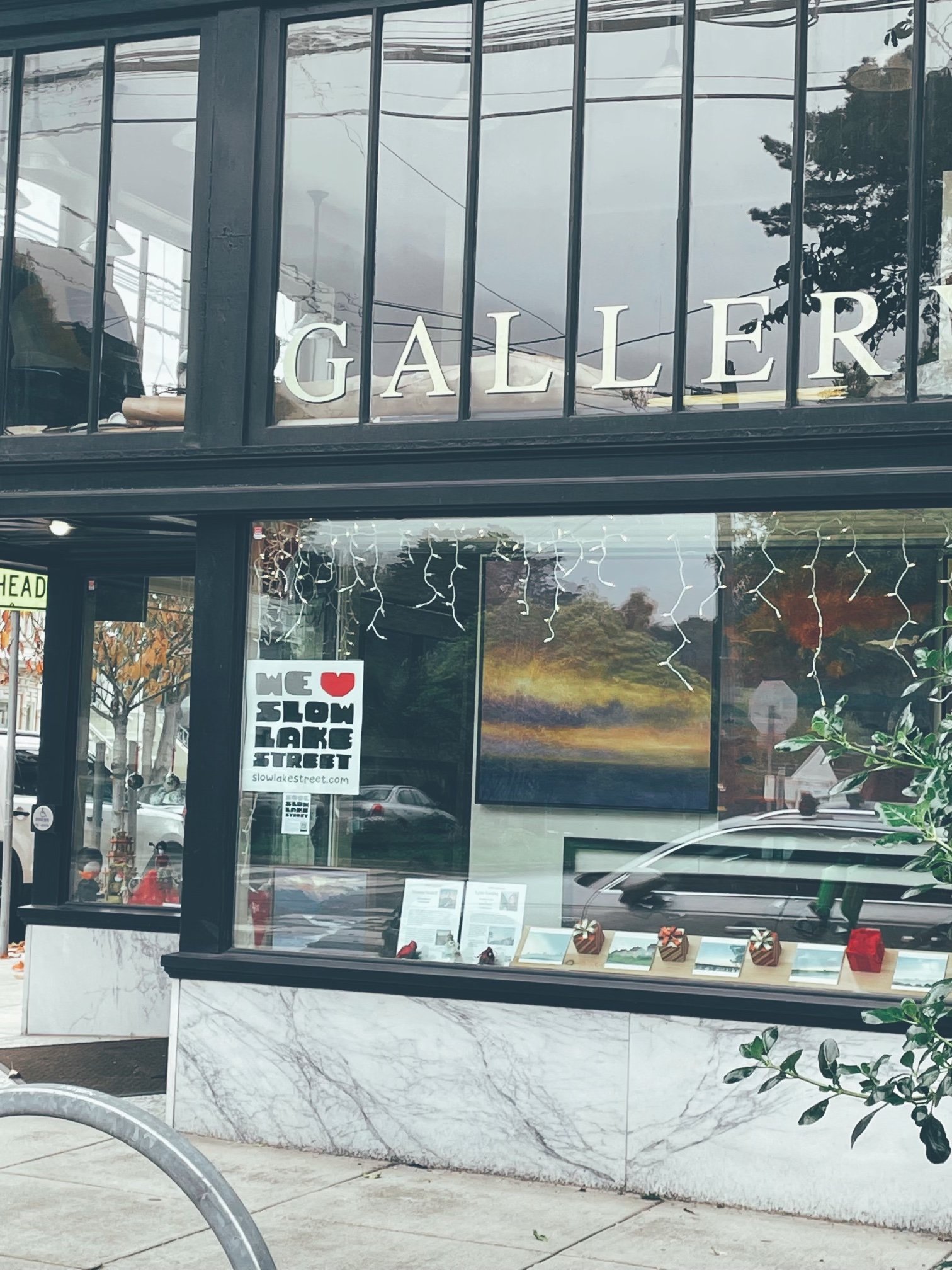
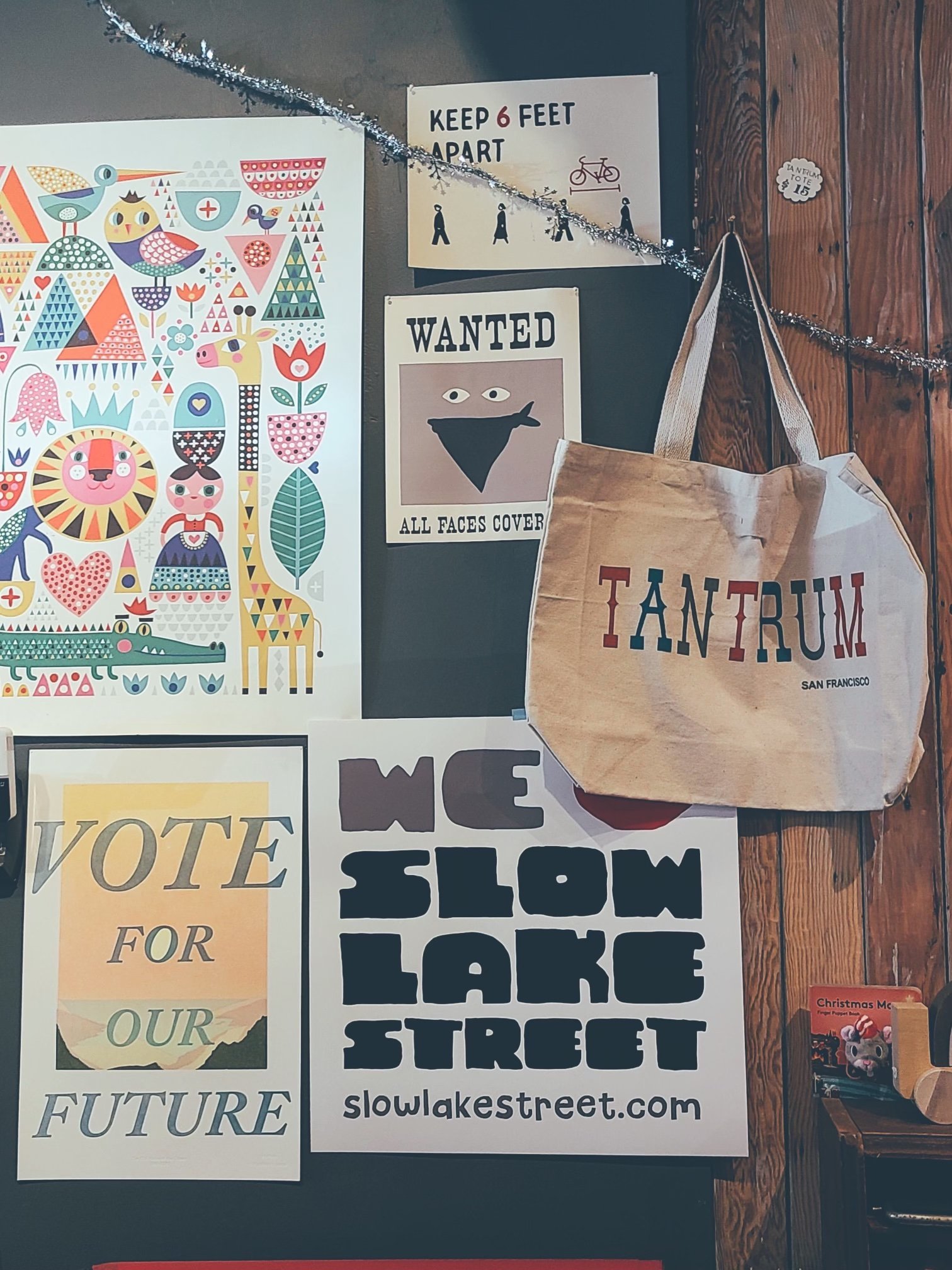
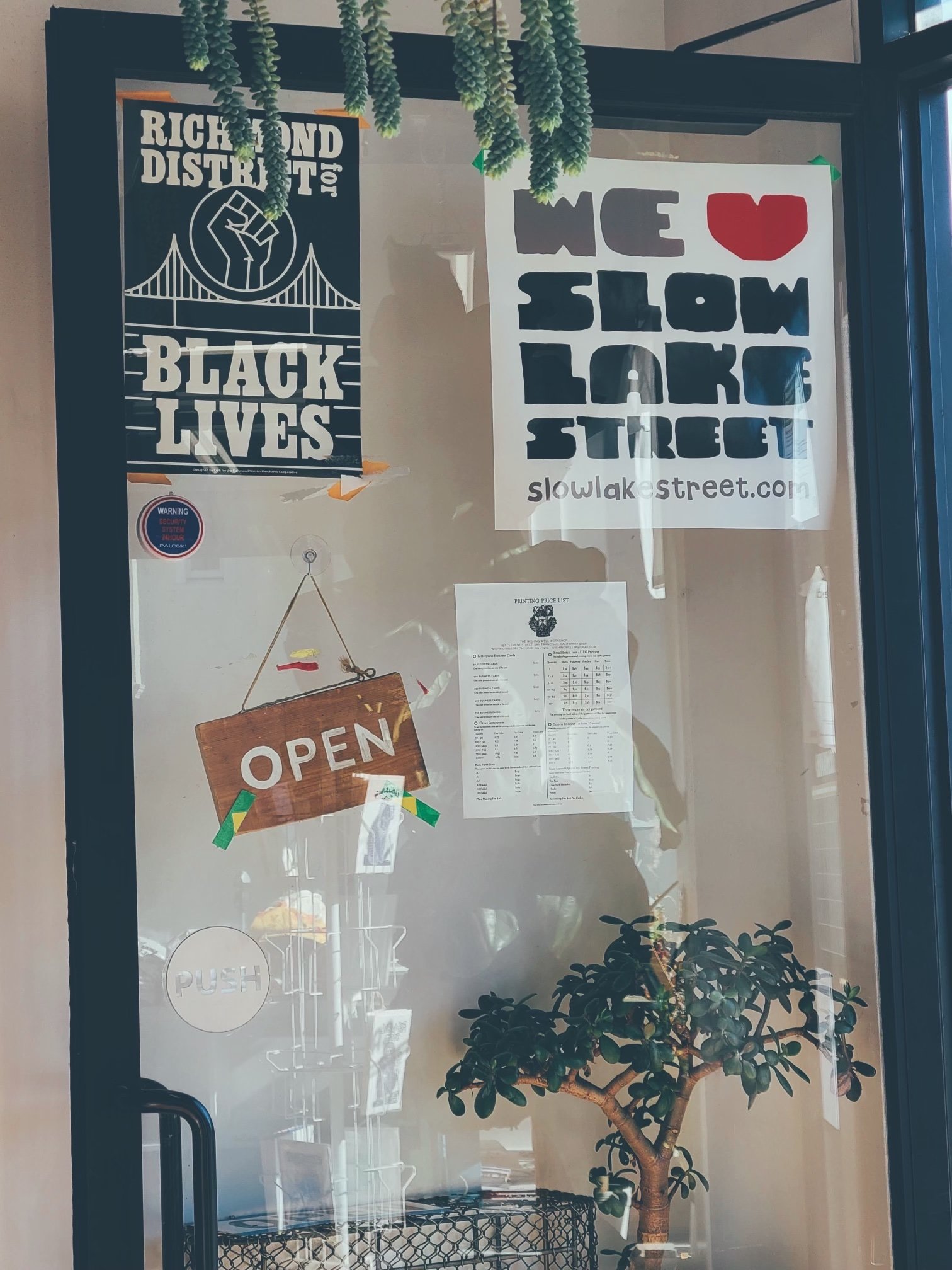

We ❤️ Slow Lake Street
Show your support for Slow Lake Street with a window sign or sticker!





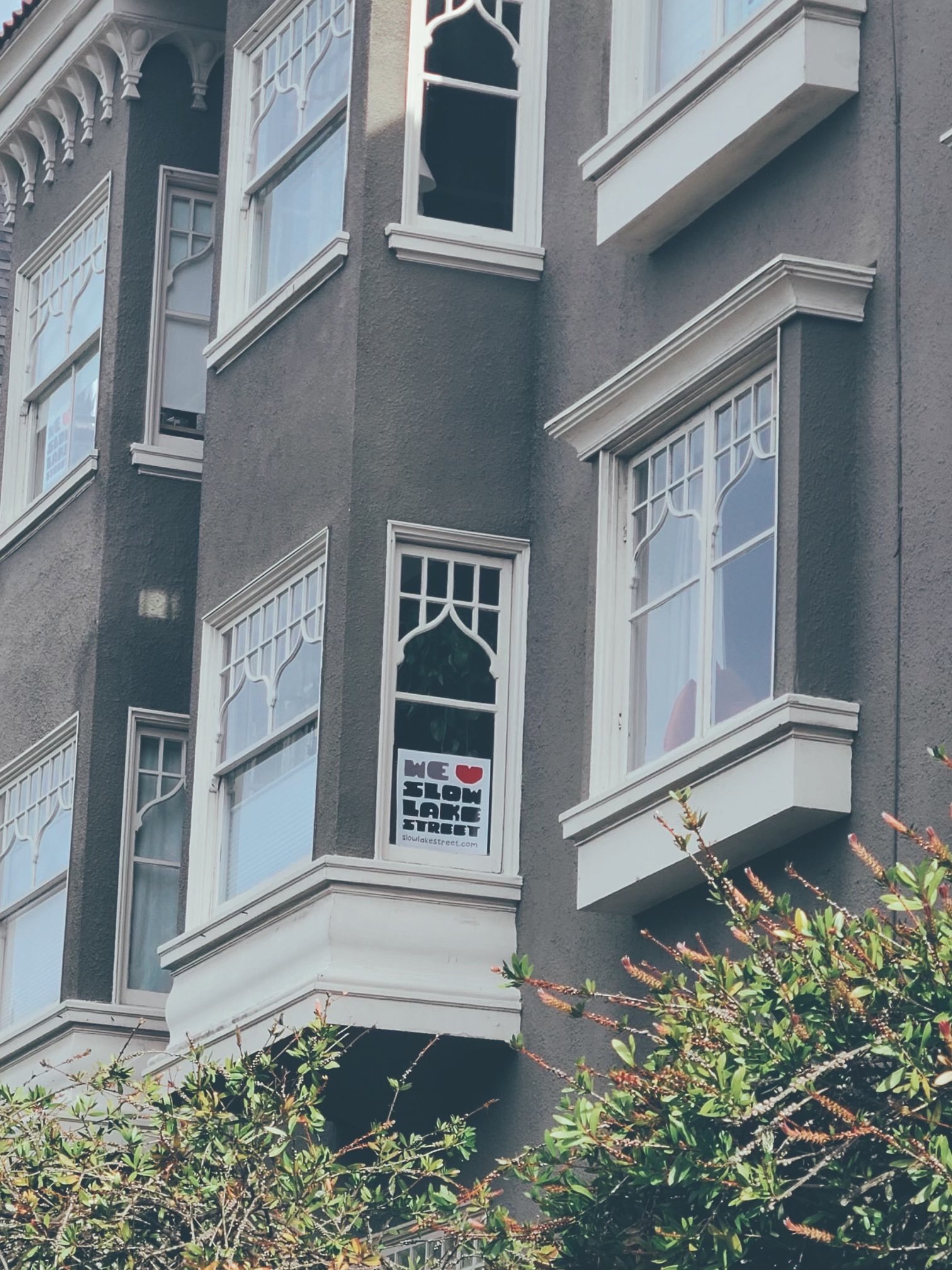

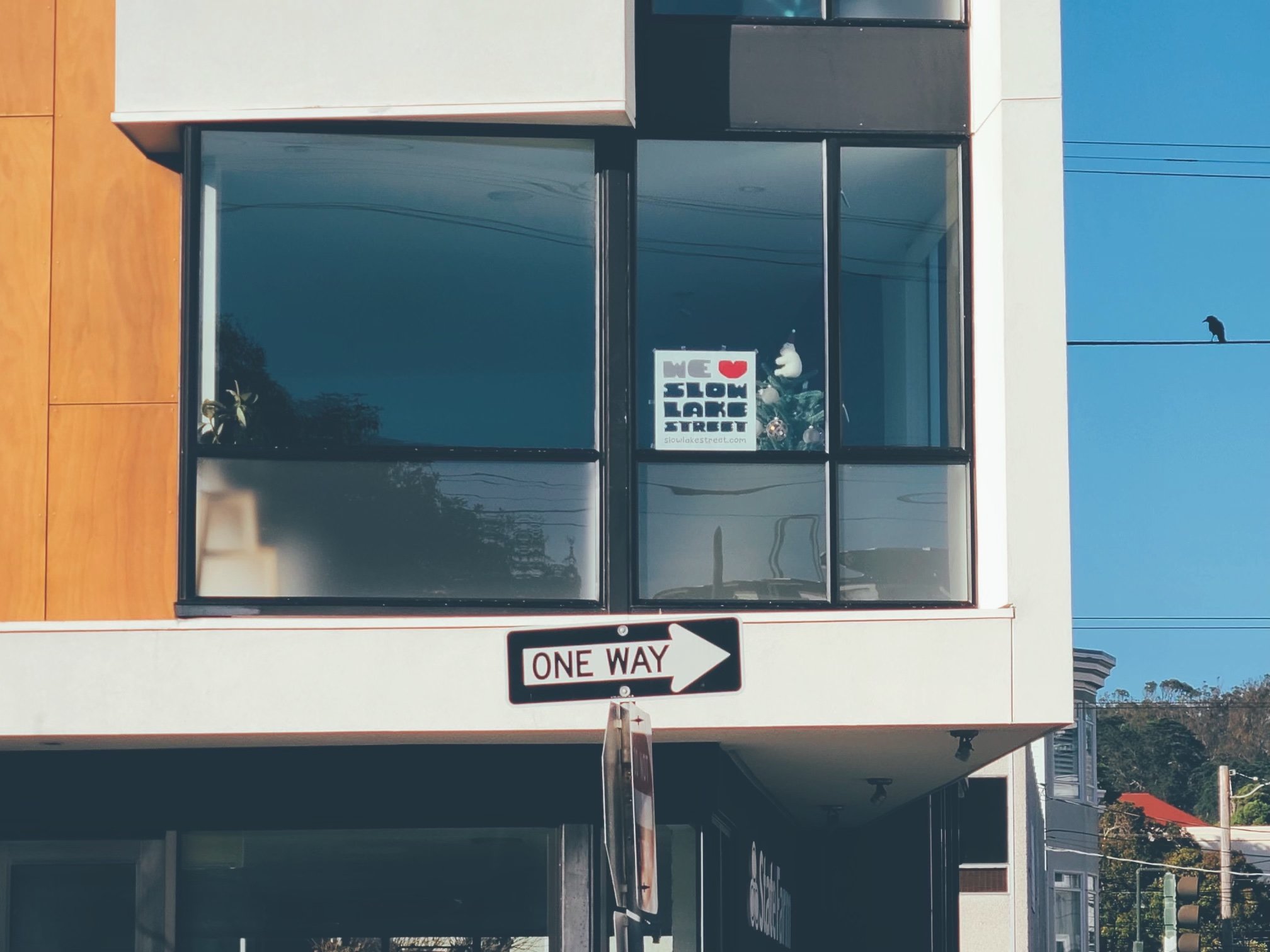



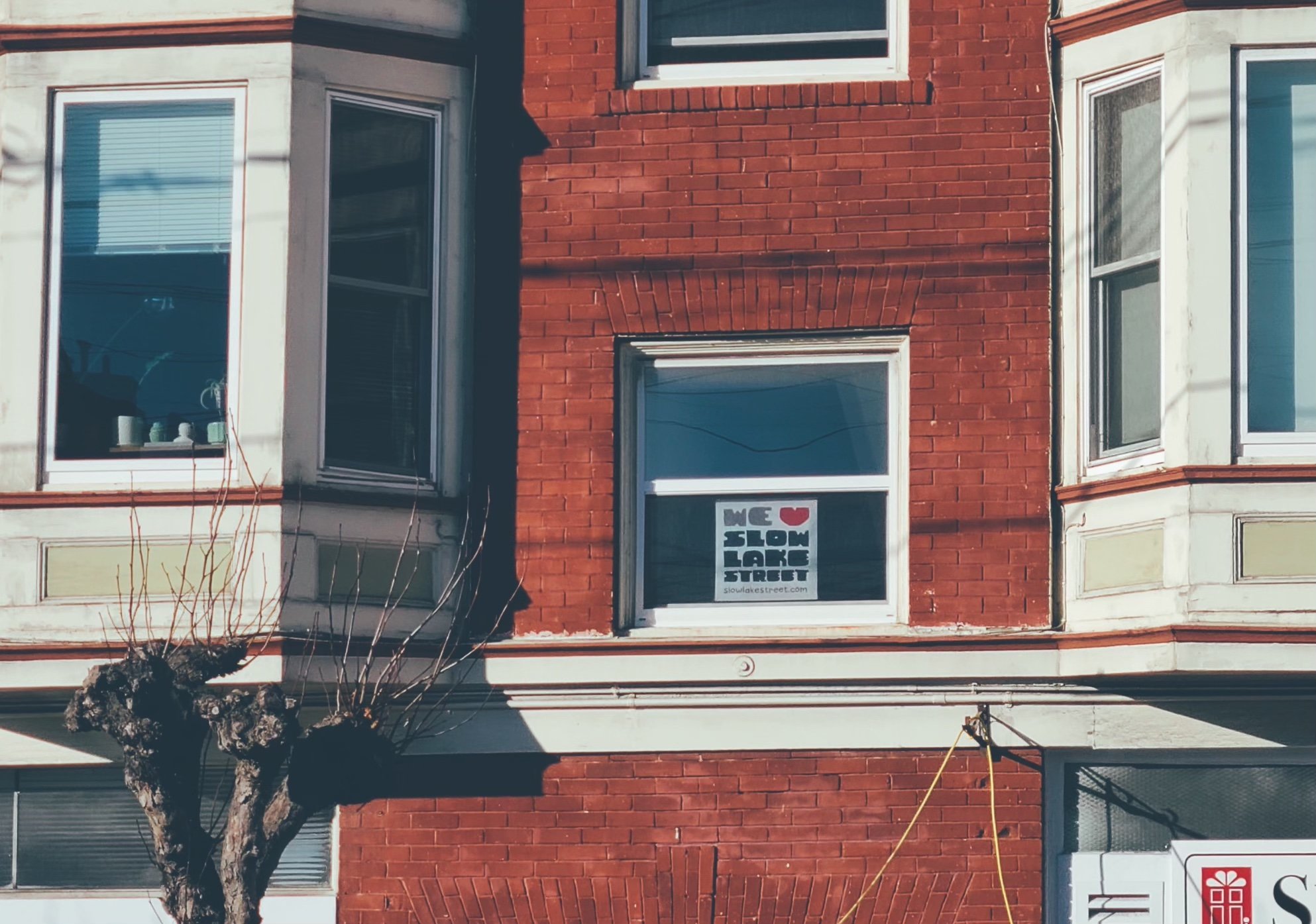
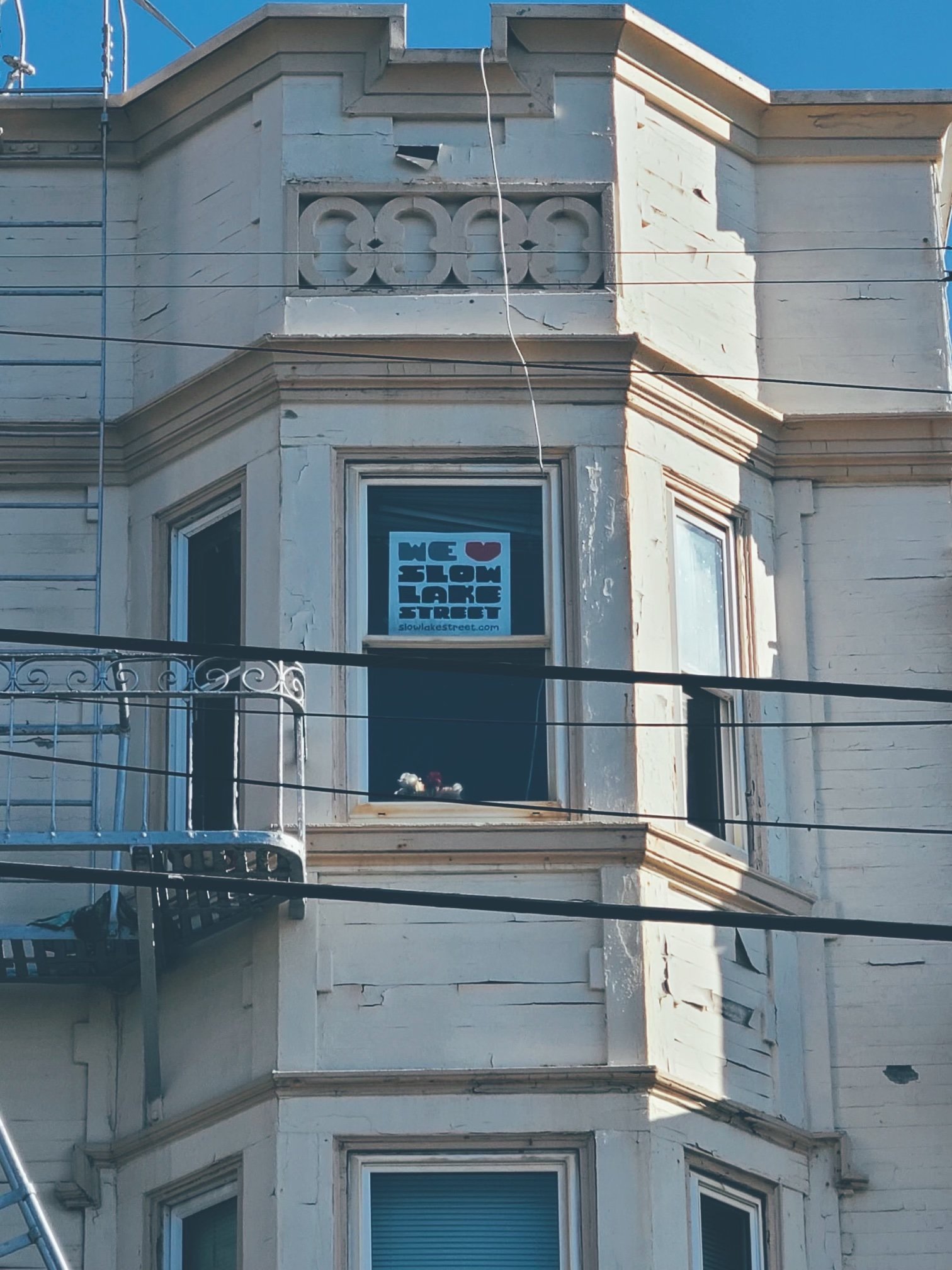
Read the March 21, 2022 letter from Friends of Slow Lake to Supervisor Connie Chan. The letter explains:
How the MTA’s March 10, 2022 resident survey analysis and California traffic study directly support the continuation of Slow Lake.
How a permanent Slow Lake is consistent with Supervisor Chan’s vision on how to determine the future of Lake Street.

Faces of Slow Lake Street



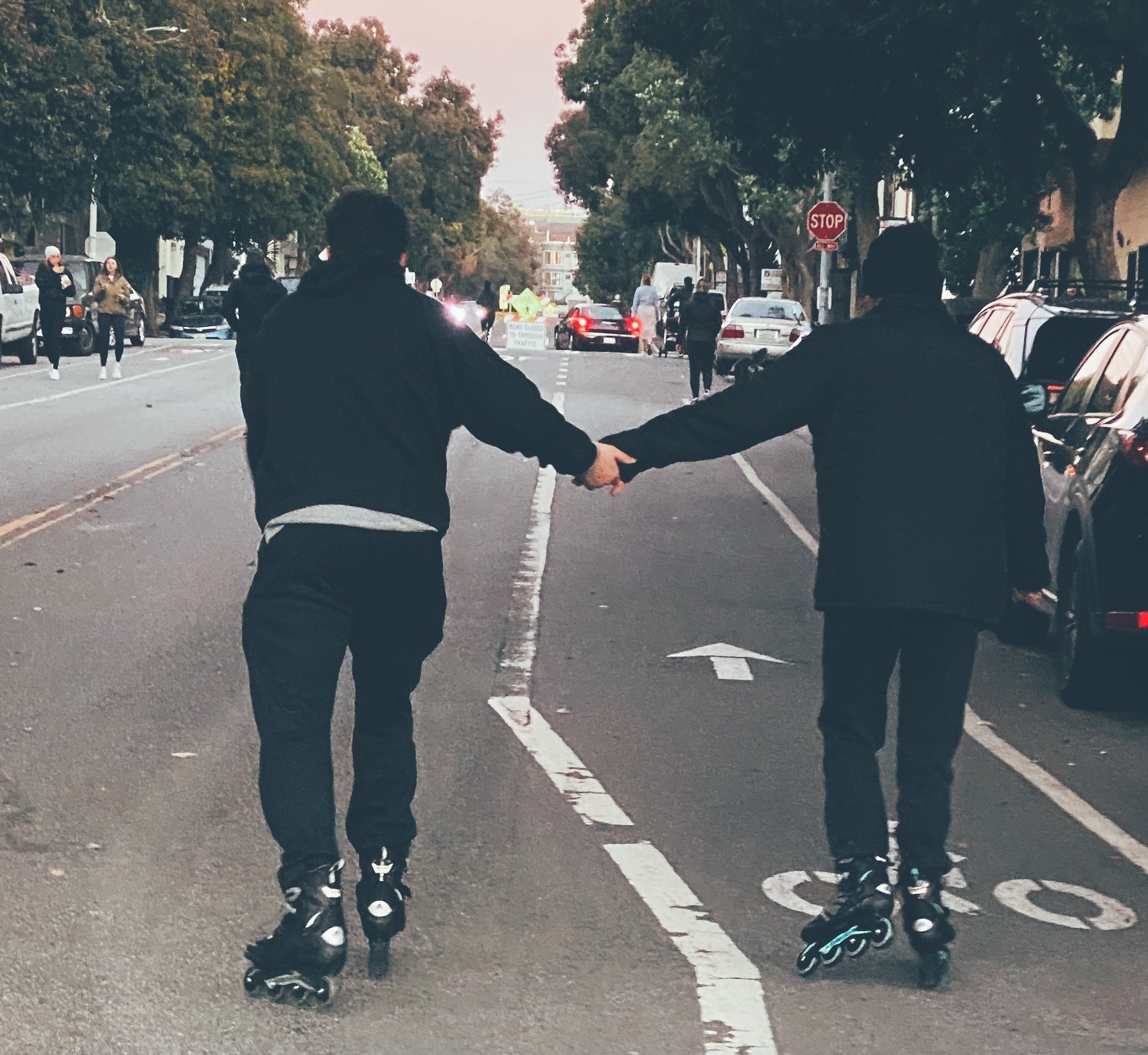




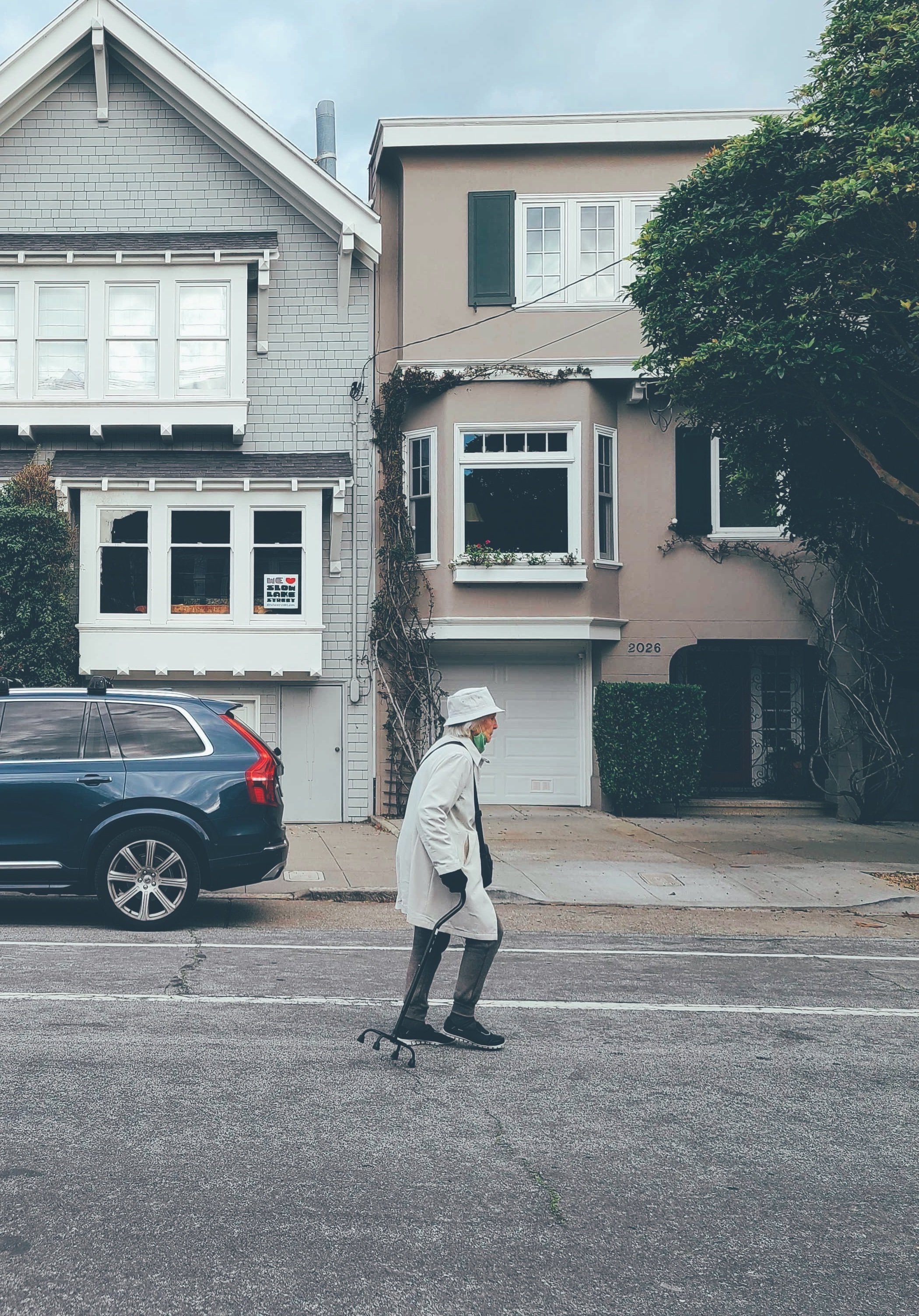
“Before the Slow Streets started, aggressive drivers used Lake Street as their personal thoroughfare to barrel at high speed through this residential neighborhood full of families with small children, creating a dangerous situation and a nuisance of pass-through traffic for residents.”
— Lake Street resident
“Since Lake Street was closed to traffic as part of Slow Streets, it has become a delightful neighborhood hub with children safely biking, neighbors going for runs, and much safer crosswalks for everyone.”
— Lake Street resident
“In less than a year of living on Lake Street before the Slow Street, my family had multiple near-misses with aggressive cars blowing through pedestrian walkways at high speeds towards Park Presidio coming close to hitting my baby and 3 year old child.”
— Lake Street resident
“I use Slow Lake to bike my kids to/from school. A network of Slow Streets allows people like me to switch from driving to biking by creating a safe route.”
— Richmond District resident
“There’s a safe corridor to get all the way down Lake then over to Clay, so it’s safe to walk or bike with my children over much more of the city than before.”
— Lake Street resident



